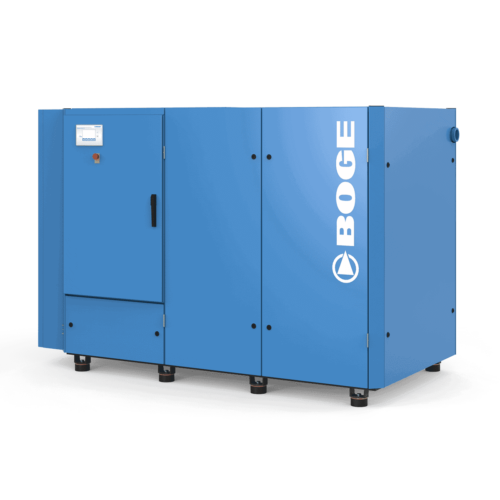An air compressor is an expensive investment in any production facility. With frequent usage, especially in high-performing businesses, it’s easy to forget that it needs routine maintenance to function effectively.
Like all machinery, after extensive use, minor wear-and-tear issues can occur. However, if these problems are overlooked, they can develop into major costly repairs.
To avoid potential disruption and downtime to your business, we’ve put together a list of five industrial air compressor maintenance tips to ensure the longevity and functionality of your compressed air systems.
1. Inspect and Change the Air Compressor Oil
Not all compressors need oil, but if yours requires it, ensure that it has an adequate level of lubricant before operating.
Without compressor oil, your air compressor will operate below capacity. It can also put strain on its metal components which can lead to machine failure.
On hot summer days when temperatures soar, oil can lose its viscosity, preventing the compressor from delivering proper lubrication to all internal parts.
During winter, moisture also can get into the oil, resulting in a thickened sludge that can cause engine damage.
How to Inspect Air Compressor Oil
To inspect your oil-injected air compressor’s oil level, here’s what you should do:
- Ensure that all equipment is disconnected from the power source.
- Place your air compressor on a flat surface and remove the fill cap.
- Look for dirt or foreign objects and debris that might have gotten into the crankcase.
- Measure the quantity of the oil with a dipstick, which should not exceed sit between the bottom and top marks for the sight glass.
How to Change Air Compressor Oil
If upon inspection, you find that that’s it’s time to change the air compressor oil (or that your oil compressor has reached the 500-1000 hours of use mark), here’s what you need to do.
- Place a collection container underneath the oil drain cap and then loosen up the drain cap to allow the used oil to drain out. Once done, secure the drain cap with the use of a tool.
- Fill the crankcase with your manufacturer’s recommended oil, but only to the level indicated above.
2. Replace the Air Filter
Using an air compressor daily means that the air filter will easily accumulate dust and debris, which will affect the performance of your machine.
To change the air filter and maintain your compressor’s optimal performance, here’s what you should do.
How to Change an Air Compressor Filter
- Make sure the compressor has cooled off and then remove the old air filter by unscrewing the filter top and base.
- Check the base for dust and other impurities that could have been trapped in between the crevices. Use a blower to ensure everything is removed.
- Attach a new filter on the filter base before screwing the filter top back again and securing the filter.
3. Manage Condensation in the Tanks
During cold weather, droplets of water can be sucked into the compression engine.
If a buildup of moisture is neglected, rust can build up, the oil can become sludgy, or the compressor’s circuits may get damaged. Here are four steps on how to manage the condensation.
How to Manage Condensation in an Air Compressor
- Ensure that your air compressor is turned off and is not attached to the power source.
- Set the tank’s pressure, ideally below 10 PSI.
- Look for the tank drain valve and open it to allow all trapped moisture to escape. You can also tilt the tank to let everything out.
- Once you’re sure that all condensates have been drained, secure the valve to prevent moisture from getting in.
4. Change the Oil Separator
When an air compressor has been used for around 1,000 hours, it’s time to replace the oil separator. Here’s how to change it.
How to Change an Oil Separator
- Open the valve to let out any air trapped inside the compressor.
- Locate the separator and remove the bolts to loosen it. Remove the separator lid and be careful not to drop any objects into the system.
- Clean the surface of the lid as well as the housing. Don’t forget to include the holes and the bolts.
- Replace the old separator filter with a new one and reattach the housing to the system. Use the right wrench to reattach the bolts and other parts.
5. Follow a Routine Maintenance Schedule
It is important to ensure that you follow the air compressor maintenance schedule outlined in your user manual, including ensuring your air compressor is serviced by a professional at least once every twelve months.
In addition, to maintain optimal performance it is recommended you also do the following preventive maintenance measures.
- On a daily basis, you should check the belt, oil levels and air leaks, drain the water in the tank, and lastly, check for vibration and other irregular noise.
- As for air filters, clean or have them replaced once a week.
- On a monthly schedule, inspect the belts, bolts, hoses, as well as the safety relief valve.
- Finally, on a yearly basis or at least after every 200 hours, check on the engine or service pump.
The Air Compressor Maintenance Experts
It is important you take steps to protect your compressed air system at all costs. Remember that by applying preventive measures, you can save time and money in the long run.
To ensure that your equipment functions well, partner with a maintenance expert who can provide the appropriate air compressor service. To get started, consult the team from Cleveland Compressors.


